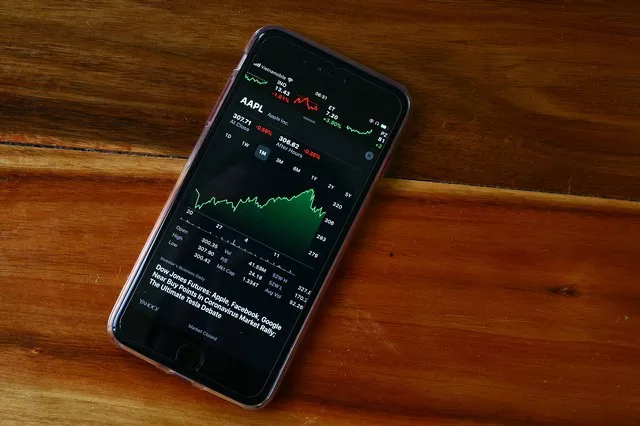The commodities futures markets are known for their diversity, offering a wide array of contracts that allow market participants to speculate, hedge, and invest in various physical commodities. However, not all commodities are actively traded in these markets. Some factors, such as liquidity, demand, and the nature of the commodity itself, contribute to the varying levels of trading activity.
Defining Active Trading in Futures Markets
Before delving into the commodities that are not actively traded in the futures markets, it’s essential to understand what constitutes active trading. In the context of commodities futures, active trading typically refers to a market with sufficient liquidity, where there is a consistent flow of buying and selling activity. Liquidity ensures that traders can easily enter and exit positions without significantly impacting the market price.
Now, let’s explore some of the commodities that are less frequently traded in the futures markets:
Rare Earth Metals
Rare earth metals, a group of 17 elements, have a variety of industrial applications, including in the production of electronics, renewable energy technologies, and defense equipment. While these metals are crucial for modern industries, they are not actively traded in the futures markets. The primary reason for this is the concentrated supply chain and the geopolitical complexities surrounding their production, which makes pricing and hedging less straightforward.
Agricultural Subtypes
While commodities like wheat, corn, and soybeans are staples in the agricultural futures markets, certain agricultural subtypes receive less attention. For example, specialty crops like saffron or exotic fruits may not have active futures contracts due to their limited production and niche market demand.
Soft Commodities
Soft commodities encompass a wide range of agricultural products, including coffee, cocoa, and sugar. While these commodities are actively traded, certain lesser-known varieties, such as yams or tamarind, may not have established futures markets due to limited global trade volumes.
Non-Metallic Minerals
Non-metallic minerals, including gypsum, talc, and mica, often find applications in construction, cosmetics, and manufacturing. However, the lack of standardized quality measures and trading infrastructure can limit their presence in the futures markets.
Synthetic Commodities
Some commodities are not naturally occurring but are produced synthetically or through complex processes. Examples include synthetic diamonds or lab-grown gemstones. These commodities may not have active futures markets due to their relatively recent emergence and niche market demand.
Rare Agricultural Varieties
While common agricultural commodities like rice and wheat are actively traded, rare or heirloom varieties of crops may not have established futures contracts. These varieties often have limited production and market demand.
Reasons Behind Low Activity
Several factors contribute to the limited trading activity of certain commodities in the futures markets:
Lack of Liquidity: Liquidity is a critical factor in determining whether a commodity is actively traded in futures markets. Commodities with limited market participants and low trading volumes often struggle to maintain the necessary liquidity levels to sustain an active futures market.
Market Demand: The level of demand for a commodity plays a significant role. Commodities that are not widely consumed or do not have a broad range of industrial applications may not attract enough interest from traders and investors to support an active futures market.
Geopolitical Considerations: Geopolitical factors, such as trade restrictions, export bans, or supply chain disruptions, can impact the trading of certain commodities. Rare earth metals, for example, are subject to geopolitical tensions, making it challenging to establish a stable futures market.
Quality and Standardization: Standardization of contract specifications is essential for futures trading. Commodities that lack consistent quality standards or are highly customized may not have actively traded futures contracts.
Transportation and Storage Challenges: The logistics involved in transporting and storing certain commodities can pose challenges. Commodities that are difficult or costly to store and transport may not be conducive to futures trading.
Environmental Concerns: Increasing environmental awareness has led to scrutiny of certain commodities. For instance, commodities associated with deforestation or environmental degradation may face challenges in establishing active futures markets due to ethical and sustainability concerns.
The Role of Emerging Markets
While some commodities may not be actively traded in established futures markets, emerging markets and innovative financial instruments have the potential to change this landscape. As economies evolve and demand for new commodities emerges, futures exchanges may develop contracts tailored to these evolving needs.
Additionally, the rise of blockchain technology and digital assets has given birth to the concept of tokenized commodities. These digital tokens represent ownership of physical commodities stored in secure locations. Tokenized commodities have the potential to open up trading opportunities for a broader range of commodities, including those traditionally considered non-tradable in futures markets.
Conclusion
The commodities futures markets are a dynamic and diverse ecosystem, catering to a wide range of commodities, from energy and metals to agricultural products and soft commodities. While some commodities thrive in these markets, others remain less actively traded due to a combination of factors, including limited market demand, geopolitical complexities, and logistical challenges.
Understanding which commodities are not actively traded in the futures markets is essential for investors, traders, and market participants seeking to diversify their portfolios or engage in hedging strategies. As emerging markets and innovative financial instruments continue to reshape the trading landscape, there may be opportunities for previously overlooked commodities to find their place in the world of futures trading. Ultimately, the evolution of futures markets will be driven by changes in global demand, technology, and market dynamics, creating new possibilities for commodities of all types.


